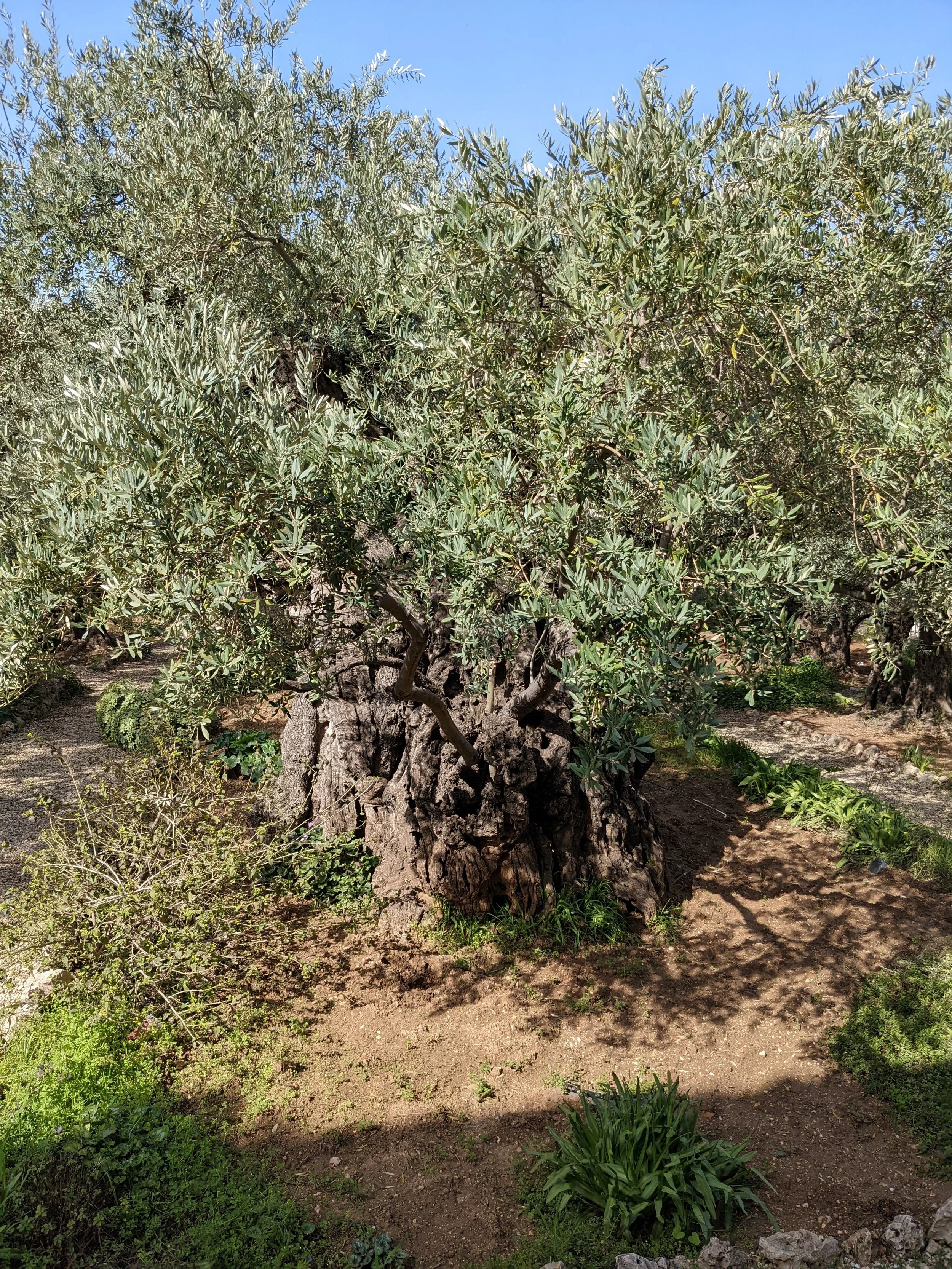As we enter Mark 13, we come to a passage of Scripture that is hotly debated. Some, like myself, believe it communicates the doctrine of future things. Others, many of whom I respect and read, believe the entirety of this chapter has to do with the destruction of the Jewish temple in the first century. And others are in between those two views. Regardless of our position on this chapter or other apocalyptic passages in Scripture, we should treat one another with respect, humility, and love. We will discover who was right someday, but we don't know today. With that as an attitudinal backdrop for the next few weeks in Mark, let's get into this next movement and chapter.
Mark 13:1 And as he came out of the temple, one of his disciples said to him, “Look, Teacher, what wonderful stones and what wonderful buildings!” 2 And Jesus said to him, “Do you see these great buildings? There will not be left here one stone upon another that will not be thrown down.”
The Temple Glory
The last few chapters of Mark took place in the temple precincts. Finally, Jesus came out of the temple, and as he did, one of his disciples (we do not know which one) pointed out the majesty and wonder of the stones and structures there (1). In Jesus' day, the temple and the platform on which it stood had been under construction for nearly fifty years. It was Herod the Great's obsession. He loved all things grandiose, thinking he could build his way to permanent fame, and the temple mount was his most spectacular triumph. He had enlarged the esplanade of the temple to a 35-acre enclosure -- one-sixth of Old Jerusalem's land area. Twelve football fields could fit within its walls. One corner of this massive patio required a fifteen-story retaining wall to enable it to hang out over the Kidron Valley. The temple and its furnishings were on another level. And the stones they used were massive. We know because some have survived to this day. The records tell us of brass gates 135' high. The temple building was hewn from large white stones, polished, brightened, and decorated with gold. Gold was everywhere, shining brightly in the potent Jerusalem sun that one often could not look directly at the temple. Modern scholars have estimated the present-day value of that temple at over one trillion dollars. It was an astounding sight. So, as they left the temple, one of the disciples pointed out its beauty to Jesus. They had, after all, spent a fair deal of time at the temple area the previous few days. And Jesus hadn't mentioned its splendor or structure, and now he's leaving. The disciple wanted to point it out to Christ.
Jesus' Perspective
But Jesus burst this disciples' bubble by saying, "Do you see these great buildings? There will not be left here one stone upon another that will not be thrown down" (2). Jesus' reply should not be all that shocking. When we consider the rebuke he laid on the temple in Mark 11, we could expect this type of response. He had called it a den of thieves. The religious leaders had abused this space. Meant for God's glory, they had turned it into a place for man's greed. In a previous era, Jeremiah foreshadowed this type of response. Through Jeremiah, God told Israel that King Nebuchadnezzar and the Babylonians would destroy the temple and that it would be abandoned.
Jeremiah 7:11, 14 (ESV)—11 Has this house, which is called by my name, become a den of robbers in your eyes? ...Therefore I will do to the house that is called by my name, and in which you trust, and to the place that I gave to you and to your fathers, as I did to Shiloh. For a time, Shiloh was where God's tabernacle had been in Israel. But their disobedience led to God removing his presence. Then, in Jeremiah's day, God removed his presence again. And now, in our passage today, we see Jesus promising the same for Herod's temple.
70 AD
Sure enough, just as Jesus had predicted, in the year 70, just a short while after Jesus spoke these words, the Romans invaded Jerusalem. Their general, a man named Titus, ordered the temple’s destruction. They lit it on fire, and the gold melted into the stones' cracks and crevices. Once the fires subsided, each stone had to be toppled over to recover the gold. It was a brutal period for the Jews -- a foreshadowing of many terrible eras throughout their history. It's estimated that two million died within just a few years. The destruction on the temple mount was so complete that future visitors could not discern where the temple had been. The temple patio still exists today, but scholars are unsure about the precise location of that old temple. It was so thoroughly deleted from existence. The word of Christ came to pass.
3 And as he sat on the Mount of Olives opposite the temple, Peter and James and John and Andrew asked him privately, 4 “Tell us, when will these things be, and what will be the sign when all these things are about to be accomplished?”
The Setting
Shell-shocked, Peter, James, John, and Andrew, men who formed Jesus' first tier of leadership, joined Jesus on the Mount of Olives (3). It overlooks the temple area and is the place Zechariah said the Lord would come to in glory (Zech. 14:4, 8-9). On that mount, these four disciples asked him when these things would happen. And, since they thought the temple's destruction would precipitate the new Messianic era, they asked when all these things would be accomplished (4).
How to Interpret the Olivet Discourse
Matthew and Luke also recorded this teaching from Jesus. Matthew's recording of the disciples' question gives us a fuller sense of what they wondered about.
Matthew 24:3 (ESV)—3 “Tell us, when will these things be, and what will be the sign of your coming and of the end of the age?” So, they wanted to know the timing of the temple's destruction. But they also wanted to know about Jesus’ coming and the end of the age. In his response, Jesus will deal with all three: (1) the temple's original destruction, (2) the rebuilt temple's eventual destruction, (3) the sign of his return and the end of this age. In saying it this way, it should be obvious I believe the events that follow are future events. Here are a few reasons why: 1) I am closely tied to a literal interpretation of the Bible when possible. It is too difficult to accept his descriptions of his coming ("lightning flash," "sun-darkened," "stars fall," "appear in heaven," "mourning tribes," and "coming on the clouds," for example) as merely symbolic and spiritual. 2) Because of the Old Testament promises. Many will be fulfilled in a millennial age when Jesus will rule, reign, and fulfill his promises to Israel. 3) It is hard to ignore the labor pains of wars, famines, and earthquakes in our modern era, while it is also difficult to force these events before 70 AD. 4) It is hard to imagine God would give a 3-fold record in his word for all future generations that only had an application for the 20-30 years before 70 AD. 5) Because telescoped prophecies were part of the Old Testament as well, so it makes sense Jesus could speak about the destruction of that old temple while also prophesying about the destruction of a future temple. 6) If Jesus is only talking about the calamity of the events in 70 AD in this passage, it would mean the kingdom did not come until after that time. Either the kingdom is here now, spiritually, or is coming in the future, literally, but I cannot believe it came spiritually in 70 AD. And it should be obvious that it did not come literally in 70 AD. 7) I believe the evidence shows Revelation was written by John long after the events of 70 AD. So Revelation must also be about future events, not just a prediction about an event in 70 AD. 8) Jesus said the tribulation he would describe in this passage was greater than any that has come before or will come after (13:19). I take this to mean the pain the earth will experience before Christ's second coming will be more severe than the flood, the Holocaust, or the Bubonic plague. While many debate the timeline of Jesus’ words, I believe the events Jesus taught about in this passage are yet future. Though some of his statements apply to their first-century context, I believe they cannot be appropriately understood only by that generation and that they have ultimate fulfillment in the future.

